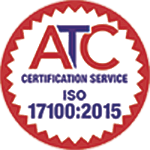Translation terminology lists are part of ensuring a quality language translation. To be honest, they are not always necessary, but quality standards in some countries are very exacting and that means that there may be a need to ensure that a translation terminology list is available to the translator.
Most professional translators tend to specialise in different areas of translation, such as medical translation, technical translation, marketing translation and so on. The more specialised the text, the more important that it is translated accurately.
A translation terminology list helps to ensure consistency when terms are used frequently. For example, legal documents may use terms that are only used in a specific legal context. Because of different legal systems used in different countries, a legal translator needs to know what the preferred terms are for each language and each legal system. That’s what a translation terminology list does.
Such a list, as well as a style guide, glossary and other aids to quality assurance help to ensure that translation tasks are uniform from one document to another and whoever has been assigned to the language translation task.
These guides to consistency are just as important when a business or organisation has its own in-house team of translators. The terminology list gives every translator the precise terms to be used whenever a document is translated.
These aids to ensure an accurate translation is completed go hand in hand with other ways that quality assurance is made available.
Most translation agencies, for example, make sure they have editing and proofreading stages as a standard part of their translation service. It is quite common in these agencies for different people to be used in the three main stages of translation, editing and proofreading. The editor may spot inconsistencies in the translation based on the translation terminology, for instance, while the proof reader’s role is more to ensure spelling accuracy and to remove spacing errors and typos.
Many freelance translators rely on editing and proofreading their own work. That doesn’t mean they are usually any more unsuccessful at providing a quality translation, but they do need to concentrate more carefully on what they are doing as well as ensure they have access to any terminology list, style guide, glossary and any other way consistency is to be maintained.



